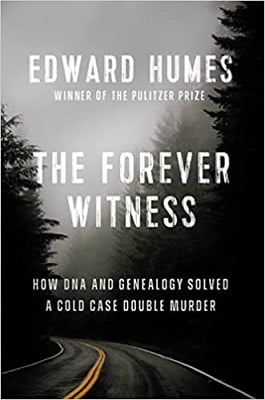Book Review
The Science of Serial Killers
It is worth prefacing this review with the dedication from the authors,
“We dedicate this book to the victims, known and unknown, and their families and friends.”
It is of utmost importance to make sure that whenever the violent acts of serial killers are addressed it is not in a glorifying or sensationalized manner. The victims should be honored and discussed respectfully in order to make sure presenting details of the case is not dishonoring or needlessly triggering/harmful to the family and friends of the victims.
That being said, it is abundantly clear that authors, Meg Hafdahl and Kelly Florence feel the same way after reading the introduction.
“Let the monsters be forgotten as we rise.”
As with the previous books in the series (The Science of…Monsters, Women in Horror, and Stephen King) The Science of Serial Killers is sectioned out into topics. Readers can dive into subjects that interest them the most like, Section 3: Women Killers or Section 5: Home Invasion. Those sections have chapters so under section three about women killers, Aileen Wuornos, Amy Archer Gilligan, and Jane Toppan (The first American serial killer) are covered.
My favorite aspect of this book is that the emphasis is really on the psychological sciences behind these infamous cases as they relate to how they were portrayed on screen. The movies based on true crime cases are the major thrust of this book.
After reading about Aileen Wuornos in this book, I watched an episode of Catching Killers on Netflix where the investigative team is interviewed about how the killer was eventually captured and brought to justice.
All of this information enhances one’s knowledge of the case and makes watching the film Monster, starring Charlize Theron as Aileen Wuornos, that much more engaging. It’s important to be able to distinguish the facts of the case versus how Hollywood “glammed” it up for the silver screen. Hafdahl and Florence do an excellent job giving equal time to how the families of the victims reacted to the film about the killer who murdered their loved one and
The critical reception of the film from the arts and entertainment industry.
“When art and true crime come together, particularly so soon after the events occurred, it is only natural for there to be disharmony.”
Fans of true crime who are already familiar with all of these cases from their deep dives into podcasts, books, or documentaries will be interested to know that Hafdahl and Florence really stick to the theme of true crime vs. Hollywood and it’s refreshing to have a new conversation surrounding these infamous killers you *think* you know so well. One of my favorite chapters was Chapter Fifteen: “A Good Marriage” about Dennis Rader, the BTK killer because it combined my love for Stephen King with my fascination for true crime fact gathering. Stephen King’s short story, A Good Marriage was inspired by his feelings after reading an article about Rader.
“Paula Rader was married to a monster for thirty-four years…I wrote it (A Good Marriage) to explore the idea that it’s impossible to fully know anyone, even those we love the most.”- Stephen King
This book covers a lot of ground and will appeal to fans of horror fiction, true crime, and movies. Basically the trifecta of dark fascinations and absorbing storytelling.
More True Crime
Crime Features
Literary Crime
Where Depth Meets Deceit
Criminal Fashion
Iconic Outfits and Styles in Crime Fiction
Ethics in Crime Fiction
Exploring Morality in Law and Order
advertisement










